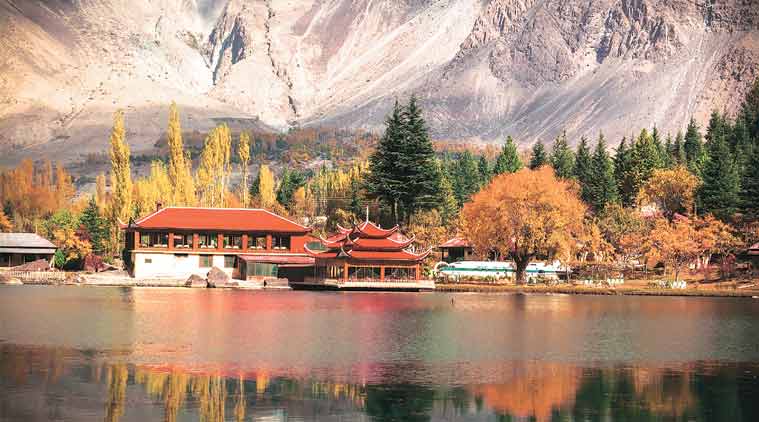
What and where is Gilgit-Baltistan?
It is a chunk of high-altitude territory at the northwestern corner of Jammu andKashmir. The region was a part of the erstwhile princely state of Jammu and Kashmir, but has been under Pakistan’s control since November 4, 1947, following the invasion of Kashmir by tribal militias and the Pakistan army. The region was renamed ‘The Northern Areas of Pakistan’, and put under the direct control of Islamabad. The Northern Areas were distinct from Pakistan-occupied Kashmir (PoK), the part of J&K that Pakistan calls “Azad Kashmir”; the Northern Areas are, however, more than six times the size of PoK. After the Pakistani government enacted the Gilgit-Baltistan Empowerment and Self-Governance Order in August 2009, the ‘Northern Areas’ came to be known as Gilgit-Baltistan.
So, did Pakistan capture Gilgit-Baltistan militarily in 1947?
Unlike the PoK, Pakistan got possession of this area through the connivance of two British military officers. In 1935, the Gilgit agency was leased for 60 years by the British from the Maharaja of Jammu and Kashmir because of its strategic location on the northern borders of British India. It was administered by the political department in Delhi through a British officer. The region’s security was the responsibility of a military force called the Gilgit Scouts, which was officered by the British.
With impending Independence, the British terminated the lease, and returned the region to the Maharaja on August 1, 1947. The Maharaja appointed Brigadier Ghansar Singh of the J&K state forces as governor of the region. Two officers of the Gilgit Scouts, Major W A Brown and Captain A S Mathieson, along with Subedar Major Babar Khan, a relative of the Mir of Hunza, were loaned to the Maharaja at Gilgit. But as soon as Maharaja Hari Singh acceded to India on October 31, 1947, Major Brown imprisoned Brigadier Ghansara Singh, and informed his erstwhile British Political Agent, Lt Colonel Roger Bacon, who was then at Peshawar, of the accession of Gilgit to Pakistan.
On November 2, Major Brown officially raised the Pakistani flag at his headquarters, and claimed that he and Mathieson had opted for service with Pakistan when the Maharaja signed the Instrument of Accession in favour of India. Two weeks later, a nominee of the Pakistan government, Sardar Mohammed Alam, was appointed the Political Agent, and took possession of the territory. Pakistani army soldiers and tribals used it as a base to launch attacks on the other towns and cities of the region like Skardu, Dras, Kargil and Leh.
Also Read: Balochistan: Everything you need to know about the Pakistan province and its bumpy history
What was the British response to the action by the two officers?
On hearing of Brown’s coup in Gilgit, Sir George Cunningham, who had just been appointed governor of North-West Frontier Province, instructed him to restore order, giving Pakistan de facto control of the region. In the 1948 British gazette, the King-Emperor awarded the “Most Exalted Order of the British Empire to Brown, Major (acting) William Alexander, Special List (ex-Indian Army)”.
What is Gilgit-Baltistan’s current status?
It has an elected Assembly and a Council headed by the Prime Minister of Pakistan. This Council wields all powers, and controls the resources and revenues from the region. In any case, the so-called regional government is under the overall control of the federal Ministry of Kashmir Affairs and Gilgit-Baltistan in Islamabad. Gilgit-Baltistan or Northern Areas do not find any mention in the Pakistani constitution: it is neither independent, nor does it have provincial status. This helps Pakistan maintain ambiguity about the region, in the way it does with PoK.
And has Pakistani rule ever run into problems in this region?
Yes. In the 1970s, Zulfiqar Ali Bhutto abrogated the State Subject Rule — the law that until then protected the local demographic composition — to facilitate Pakistani Sunnis to acquire land and settle there. This order damaged the social fabric and provoked sectarian feuds that continue to simmer until today.
Later, anti-Shia forces sponsored by Gen Zia-ul-Haq set about altering the ethnic composition of the region; the number of Shias has since come down drastically. Shia-Sunni and Shia-Nurbakshi riots fomented by the Pakistani establishment caused extreme socio-political polarisation in Skardu in the early 1980s. A permanent trust deficit was created in May 1988 when tribal Lashkars, after receiving Zia’s nod, abducted local women and massacred thousands of Shias in Gilgit.
What is India’s stand on the region?
India sees Gilgit-Baltistan as part of Indian territory illegally occupied by Pakistan. The unanimous parliamentary resolution of 1994 had reaffirmed that the region is a “part of the State of Jammu and Kashmir, which is an integral part of India by virtue of its accession to it in 1947”.
[Source: The Indian Express]



